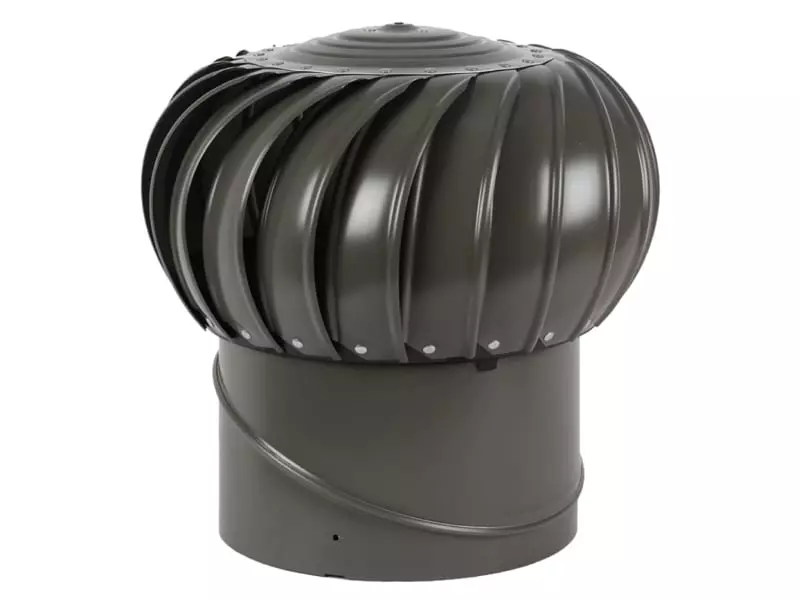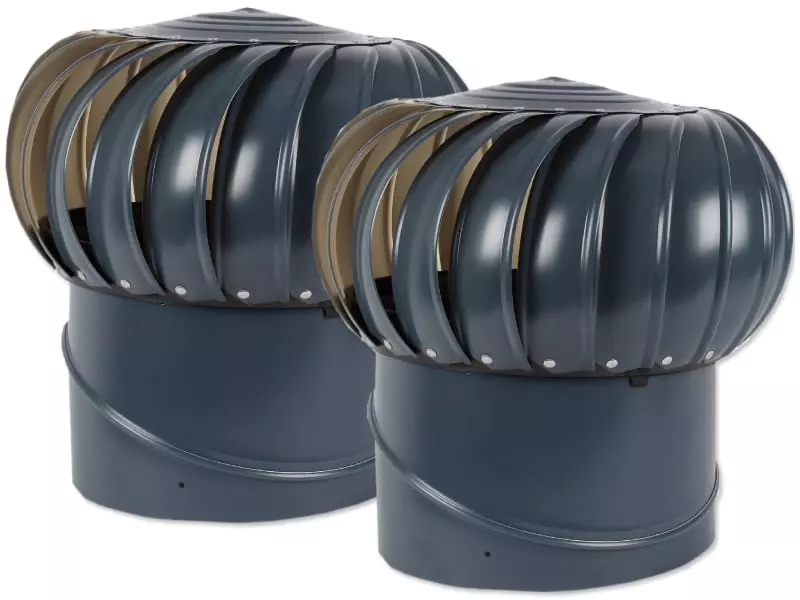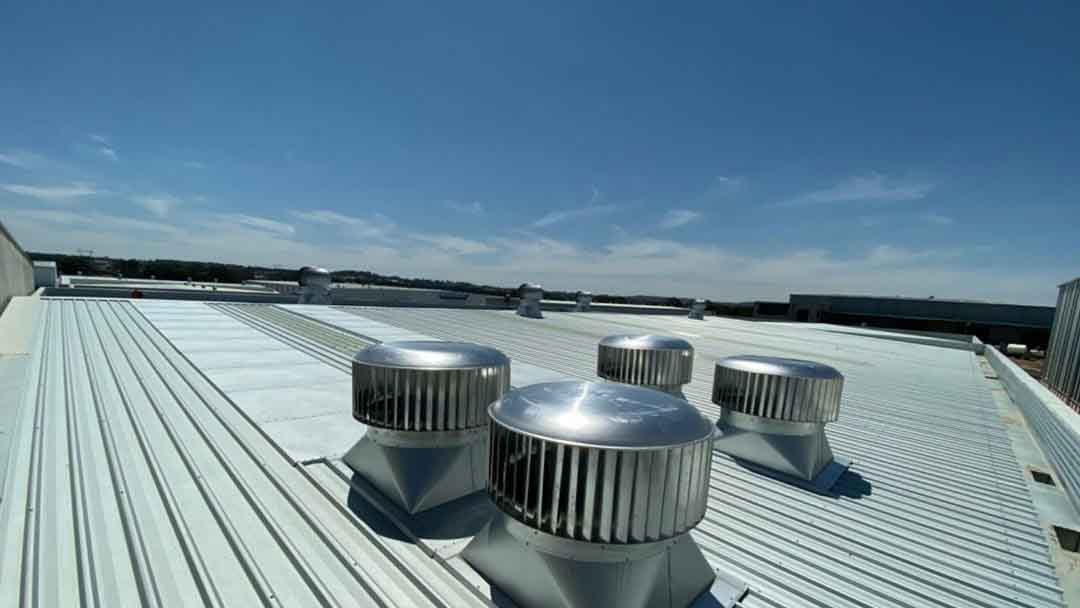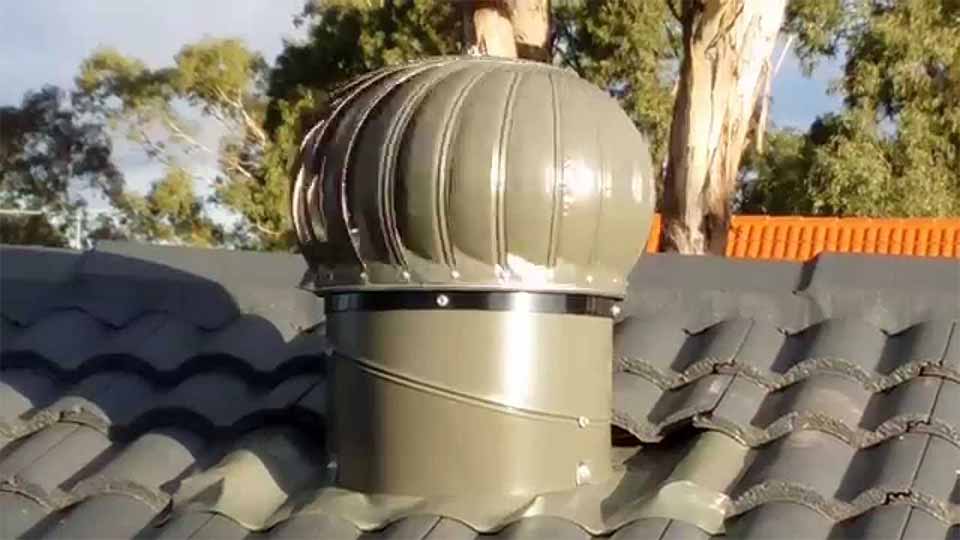What Are the Most Common Roof Turbine Vent Sizes for a Home?
Rain Heads Custom Made Shipped Free Australia Wide – Click Here >
Dambuster Rain Heads Shipped Free Australia Wide – Click Here >
Commercial Industrial Roof Vents 300mm-950mm – Click Here >
Eco-Friendly Roofing Insulation Shipped Free – Click Here >
Gutter Sumps Shipped Free Australia Wide – Click Here >
1 Roof Vent
Supply & Installation Price
$520/1

1 Ampelite 300 Spinaway
Colorbond or Mill Finish Supply & Installation Price
Download PDF
2 Roof Vent
Supply & Installation Price
$860/2

2 Ampelite 300 Spinaway
Colorbond or Mill Finish Supply & Installation Price
Download PDF
3 Roof Vent
Supply & Installation Price
$1,090/3

3 Ampelite 300 Spinaway
Colorbond or Mill Finish Supply & Installation Price
Download PDF
4 Roof Vent
Supply & Installation Price
$1,300/4

4 Ampelite 300 Spinaway
Colorbond or Mill Finish Supply & Installation Price
Download PDF
Whirlybird Vent Sizes
Making use of a roof turbine ventilation system to improve the airflow into your attic is always a great idea. There is no one-size-fits-all when it comes to roof turbine vent sizes, and it varies in different situations. As a rule of thumb, for every 50 square meters of attic space, 1 roof turbine vent of 12-inch can be installed.
A roof turbine needs wind to work efficiently. Hence, make sure that you have the proper vent size to improve the flow of air in your attic. When you install a turbine that is too big or too small, you may be wasting your money. Continue reading the post to find out more.
What size roof turbine vent is best for you?
It is seen that most of the houses with a turbine installed on rooftops consist of about 12 to 14 inches vents. Also, the number of turbines plays an important role. Here are some tips that may help you decide what size of roof turbine vent could be best for your house.

1. Get the city codes – The first thing you can do is visit your city building department to get the recent codes relating to venting. You would find that most policies in force require you to have 1 foot of vent area for every 150 feet of attic.
Keep in mind that it is a crucial step. When you install a vent that doesn’t match up to the code, you may have to take them down, resulting in a waste of time and money. The codes give you common guidelines to follow when you have completed your project.
Ultimate Dog Training System >
2. Have your calculations right – There are some calculations you need to undertake to find out how much venting you may need for your roof turbines. First, calculate the space of your attic and draw it on a graph paper. Take the area of your attic and multiply the number by 144.
Now, that gives you square inches in place of square feet. After that, take the number and further divide it by 300. The answer is the amount of ventilation that your attic needs. Go ahead with this dimension, and purchase the right roof turbine.
Are roof turbines the best solution?
If you ever have been in rooftops on a bright sunny day, you may tend to sweat quickly. These days, the average roof size in Australia is about 200 square meters. On a clear bright day, that means about one kilowatt per meter square heat is radiated onto the rooftops.
Hence, 200 x 1 KW = 200 KW of heat. Now, that’s a lot of heat coming from a small surface. Even when you have a light-coloured roof with 50% reflection, the roof space would be getting lots of heat. And, that means your home would be much harder to cool.
So, is a roof turbine vent going to help? Go around shopping for the roof turbine, and you will find lots of them. These vents are easy to install, comes at affordable prices, and needs less maintenance. But, they may not be effective because of some reasons.

Without an adequate source of incoming air like the gable or eaves vent, the roof turbines may struggle to remove much warm air from the attic. A normal turbine can remove about 100 to 200 cubic meters of air per hour. But, it is not enough to make a great impact when there are about 200 kilowatts heat falling on your roofs.
On a sunny day, the effectiveness of the turbines would be reduced. Also, it needs the outside airspeed of about 5 meters per second and above to be effective. This is the reason why most manufacturers of roof turbines suggest a minimum of three vents for a normal domestic roof.
How many roof turbines do you need?
For every 50 square meters of roof space, 1 roof turbine is required. The average new houses in Australia have about 245 square meters of floor space. Installing a giant roof turbine vent on your rooftops or industrial facility doesn’t define proper ventilation.
It is the ratio that counts. The real secret about a good ventilation system lies in the balance between the exhaust and intake of airflow. For a room to be properly ventilated, these two factors need to be balanced out. To get the best out of your money on roof turbines, you need to do a little math.
It largely depends on the space you think the vents to cover. One simple rule is that the bigger the roof space, the larger would be the capacity of warm air. As such, it calls for more roof vents. Also, the designing of your roof contributes to the number of vents you may need to put on your rooftop.
Some roofs even have hidden or enclosed spaces that remain isolated, but allow radiant heat to get trapped inside. These designs attract extra ventilators to make sure the airflow remains constant in the house.
How to install a roof turbine vent properly?
Roof turbine vents come in different sizes so that they can fit the exact dimensions of your home. Here are the steps.
- Position the ladder on the ground and gently climb up to the spot, and inspect the area. Verify that it has been installed properly and the base covered with shingles to provide stability
- Wait for a light breeze to find out if the turbine spins with little wind. If it isn’t spinning, you need to replace it
- Now, position the ladder below the soffit and inspect if they are installed properly. These vents are responsible for the air to circulate on the attic
- Calculate the square footage of your home and find out the number of vents required to work properly. Suppose, a house with1300 square feet needs two 12-inch roofturbines
Conclusion:
To find out the number of roof turbines for your house, you need to make calculations keeping in mind about the intakes in the areas where you need to install the vents.
1 Roof Vent
Supply & Installation Price
$520/1

1 Ampelite 300 Spinaway
Colorbond or Mill Finish Supply & Installation Price
Download PDF
2 Roof Vent
Supply & Installation Price
$860/2

2 Ampelite 300 Spinaway
Colorbond or Mill Finish Supply & Installation Price
Download PDF
3 Roof Vent
Supply & Installation Price
$1,090/3

3 Ampelite 300 Spinaway
Colorbond or Mill Finish Supply & Installation Price
Download PDF
4 Roof Vent
Supply & Installation Price
$1,300/4

4 Ampelite 300 Spinaway
Colorbond or Mill Finish Supply & Installation Price
